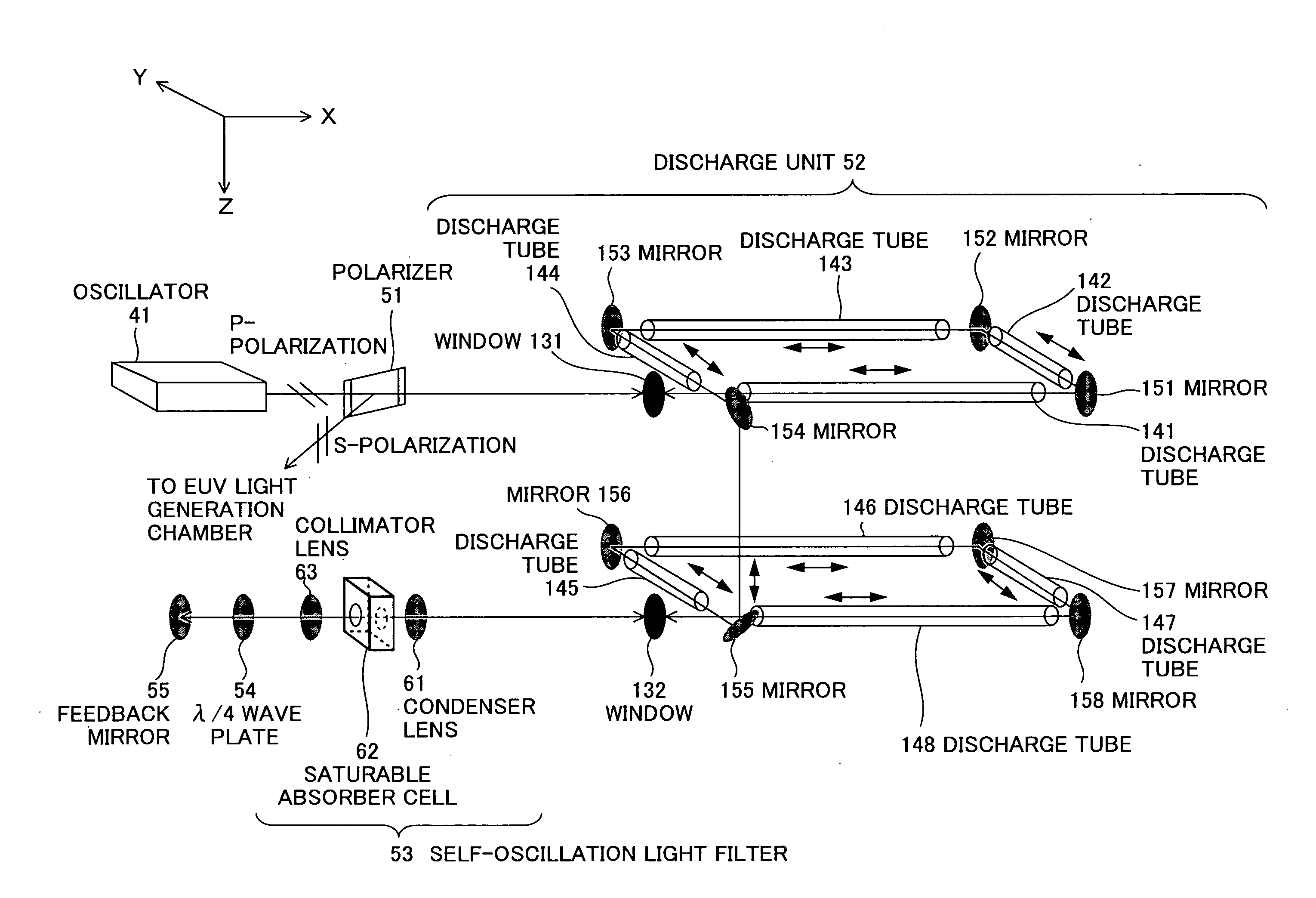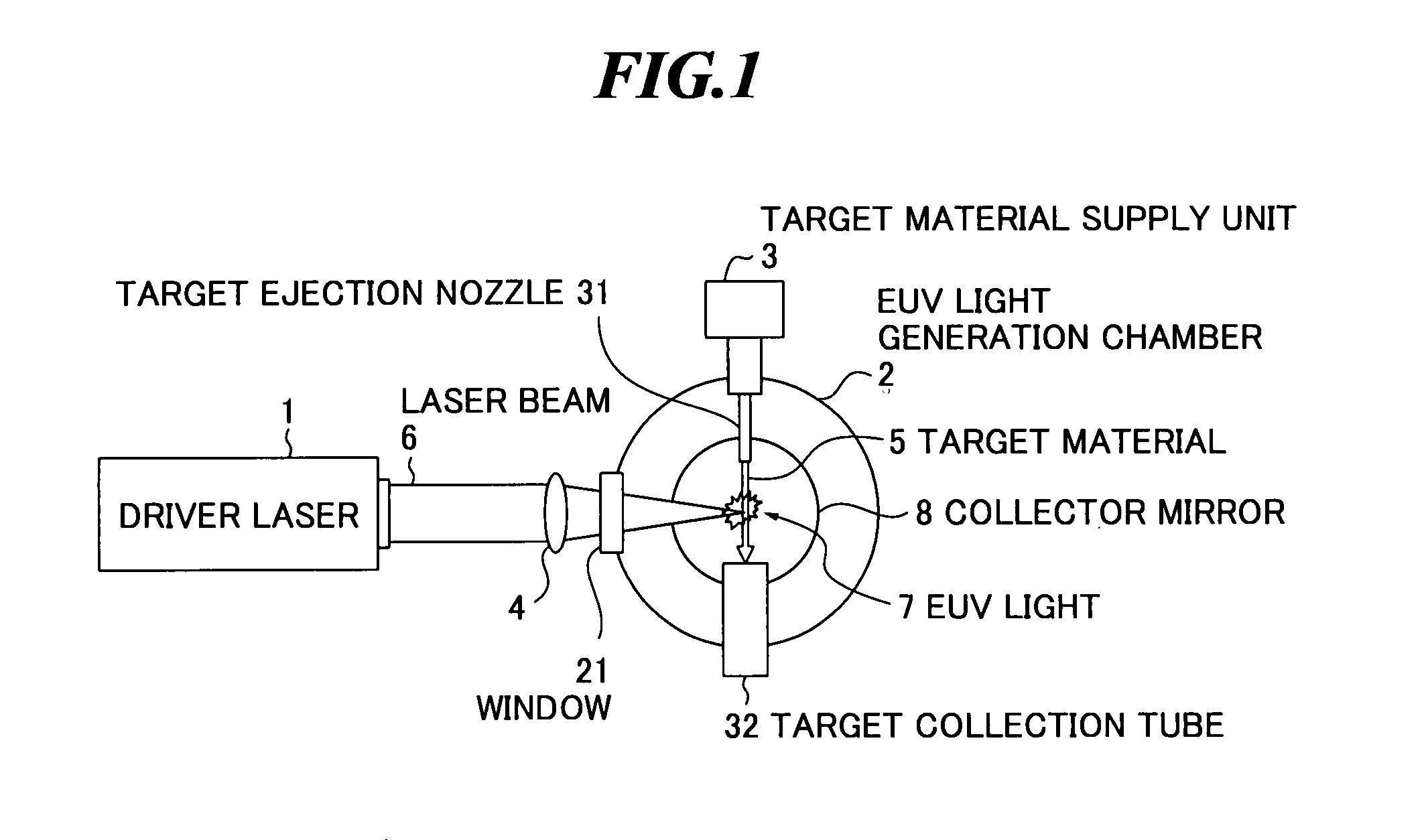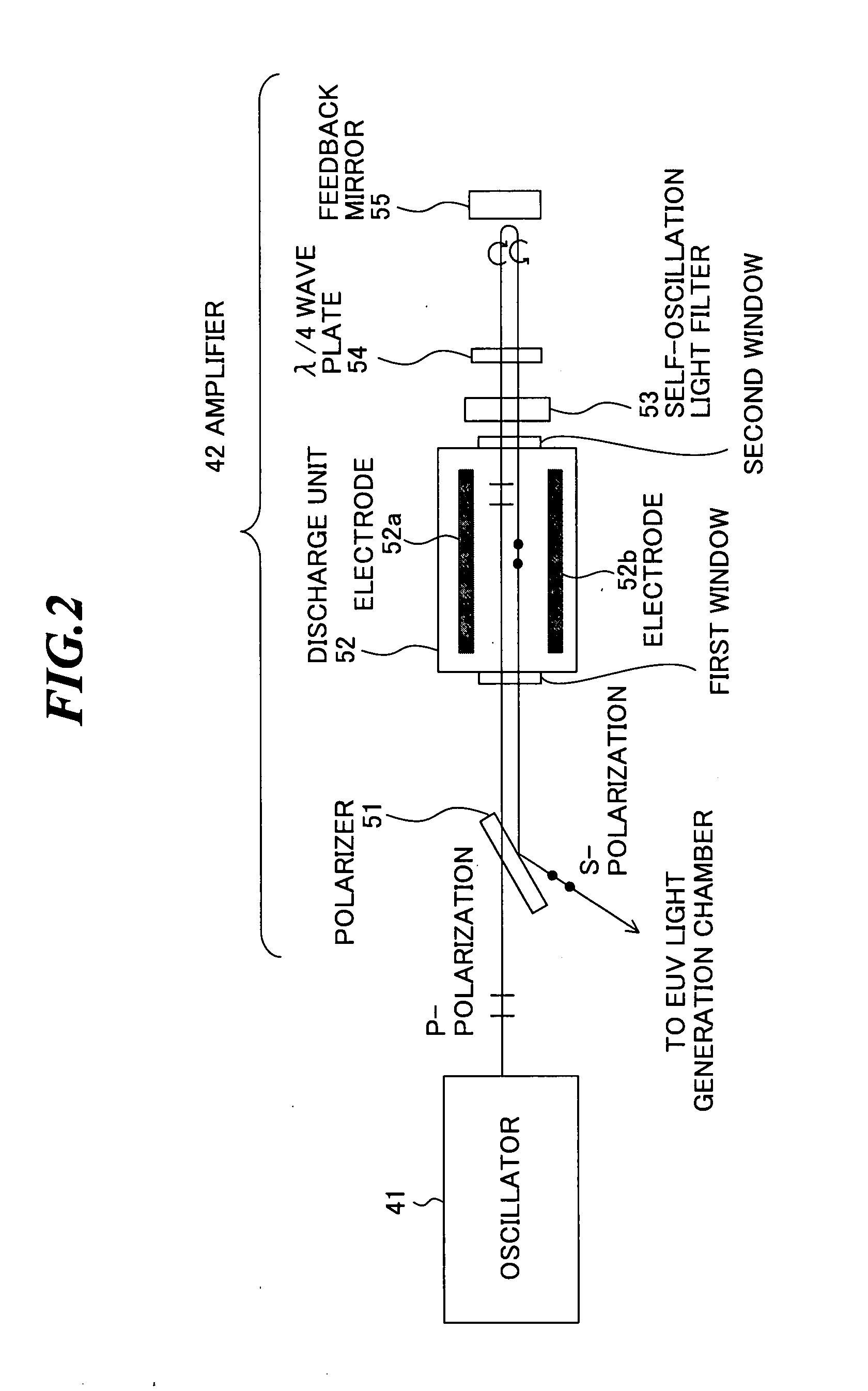Driver laser for extreme ultra violet light source device
a technology of ultra violet light source and driver laser, which is applied in the direction of laser optical devices, laser details, electrical equipment, etc., can solve the problems of reducing reducing the efficiency of laser beam amplitude, and increasing the size of the driver laser
- Summary
- Abstract
- Description
- Claims
- Application Information
AI Technical Summary
Benefits of technology
Problems solved by technology
Method used
Image
Examples
second embodiment
[0115] Next, a driver laser will be described.
[0116]FIG. 14 is a schematic diagram showing a principle of a driver laser according to the second embodiment. As shown in FIG. 14, the driver laser includes an oscillator 41 and an amplifier 43 for amplifying a laser beam emitted from the oscillator 41. The amplifier 43 has a polarizer 51, a discharge unit 52, a circular polarization mirror (λ / 4 phase retarding mirror) 56, a self-oscillation light filter 53, and a feedback mirror 55.
[0117] A laser beam (here, P-polarized) emitted from the oscillator 41 passes through the polarizer 51 and is transmitted through a first window to be input into the discharge unit 52. The laser beam (P-polarized) input into the discharge unit 52 from the polarizer 51 is amplified during passing through an excited laser medium.
[0118] The circular polarization mirror 56 converts the laser beam with linear polarization (P-polarization) amplified in the discharge unit 52 into a laser beam with circular polar...
third embodiment
[0137] Next, a driver laser according to the present invention will be described.
[0138]FIG. 18 is a schematic diagram showing a principle of a driver laser according to the third embodiment. As shown in FIG. 18, the driver laser includes an oscillator 41 and an amplifier 42.
[0139] The oscillator 41 emits a laser beam (here, S-polarized) to a reflection surface with a coating of the polarizer 51 (surface on the side of the discharge unit 52). The laser beam (S-polarized) emitted from the oscillator 41 is reflected by the polarizer 51 to the right direction in the drawing and transmitted through a first window to be input into the discharge unit 52. The laser beam (S-polarized) input into the discharge unit 52 is amplified during passing through an excited laser medium.
[0140] The laser beam (S-polarized) amplified in the discharge unit 52 passes through a self-oscillation light filter 53. When a self oscillation has occurred in the discharge unit 52 and self-oscillation light has be...
fourth embodiment
[0147] Next, a driver laser according to the present invention will be described.
[0148]FIG. 19 is a schematic diagram showing a principle of a driver laser according to the fourth embodiment. As shown in FIG. 19, the driver laser includes an oscillator 41 and an amplifier 43.
[0149] The oscillator 41 emits a laser beam (here, S-polarized) to a reflection surface with a coating of a polarizer 51 (surface on the side of a discharge unit 52). The laser beam (S-polarized) emitted from the oscillator 41 is reflected by the polarizer 51 to the right direction in the drawing and is transmitted through a first window to be input into the discharge unit 52. The laser beam (S-polarized) input into the discharge unit 52 is amplified during passing through an excited laser medium.
[0150] The laser beam (S-polarized) amplified in the discharge unit 52 is reflected by a circular polarization mirror 56 to the upward direction in the drawing. The circular polarization mirror 56 converts the laser b...
PUM
 Login to View More
Login to View More Abstract
Description
Claims
Application Information
 Login to View More
Login to View More - R&D
- Intellectual Property
- Life Sciences
- Materials
- Tech Scout
- Unparalleled Data Quality
- Higher Quality Content
- 60% Fewer Hallucinations
Browse by: Latest US Patents, China's latest patents, Technical Efficacy Thesaurus, Application Domain, Technology Topic, Popular Technical Reports.
© 2025 PatSnap. All rights reserved.Legal|Privacy policy|Modern Slavery Act Transparency Statement|Sitemap|About US| Contact US: help@patsnap.com



